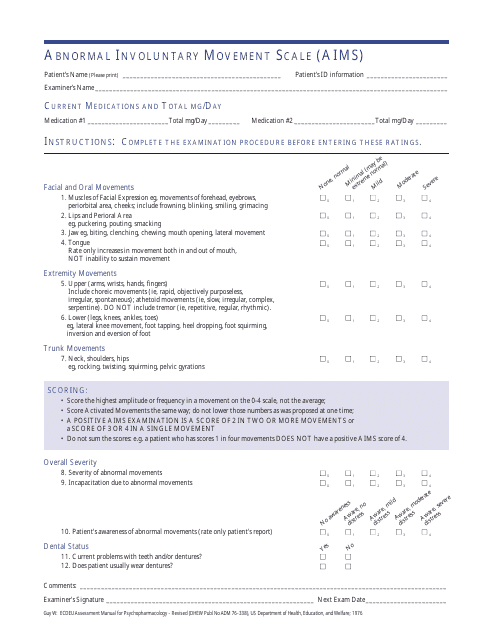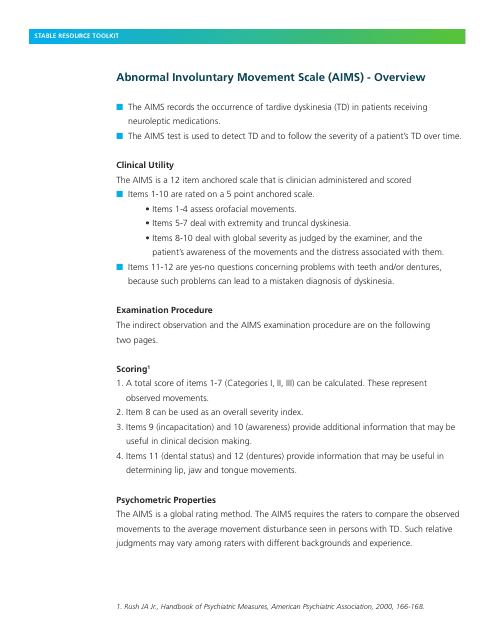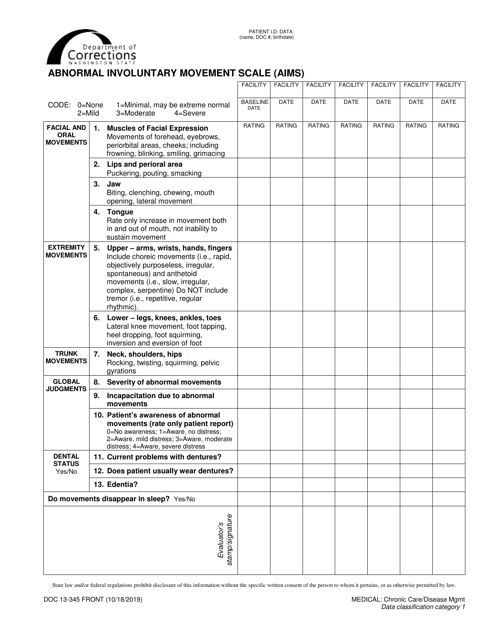Abnormal Involuntary Movement Scale Templates
The Abnormal Involuntary Movement Scale (AIMS), also known as the abnormal involuntary movement scale, is a widely used assessment tool in the field of neurology. This document collection provides various versions of the AIMS from different states, including New Hampshire, Delaware, and Oklahoma.
The AIMS is designed to evaluate and quantify abnormal movements, such as tremors, dyskinesia, and dystonia, that may be caused by neurological conditions or medication side effects. The scale allows healthcare professionals to assess the severity and impact of these involuntary movements on an individual's daily functioning.
By using the AIMS, healthcare providers can accurately monitor the progression of abnormal movements over time and make informed decisions regarding treatment options. The AIMS is especially valuable in the management of conditions like Parkinson's disease, tardive dyskinesia, and Huntington's disease.
Whether you are a healthcare professional looking for a standardized assessment tool or an individual seeking more information about abnormal movements and their impact, this collection of AIMS documents provides a comprehensive resource. Explore the different versions of the AIMS from various states to find the most relevant and up-to-date information for your needs.
Documents:
7
This form is used for assessing and measuring abnormal involuntary movements in individuals. It is commonly used in the state of New Hampshire.
This Form is used for assessing abnormal involuntary movements in Washington.
This document describes the Abnormal Involuntary Movement Scale (AIMS), which is a tool used to assess abnormal movements in individuals. It provides a standardized way to evaluate and measure involuntary movements.






